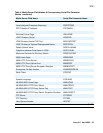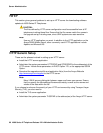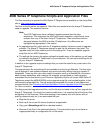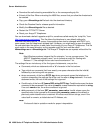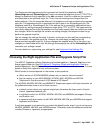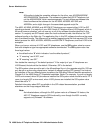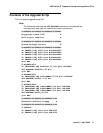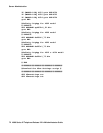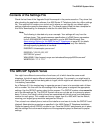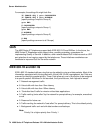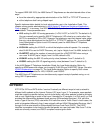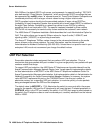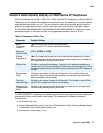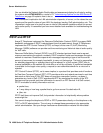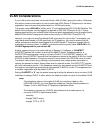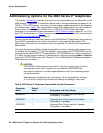
The GROUP System Value
Issue 2.2 April 2005 73
Contents of the Settings File
Check the last lines of the Upgrade Script file example in the previous section. They show that
after checking the application software, the 4600 Series IP Telephone looks for a 46xx settings
file. This optional file is under your control and is where you can identify non-default option
settings, application-specific parameters, etc. The Avaya support Web site has a template for
this file for downloading. An example of what the file could look like follows.
Note:
Note: The following is intended only as an example. Your settings will vary from the
settings shown. This sample assumes specification of a DNS Server, parameters
for the 4630/4630SW Directory application, and a 4620 Web Browser. See
Administering Options for the 4600 Series IP Telephones
on page 80, for details
about specific values. You need only specify settings that vary from defaults,
although specifying defaults is harmless.
DNSSRVR=”dnsexample.yourco.com”
DIRSRVR=”123,123,123,123”
DIRTOPDN=”yourco”
WMLHOME=”http://support.avaya.com/elmodocs2/avayaip/4620/home.wml”
WEBPROXY=”11.11.11.11”
The GROUP System Value
You might have different communities of end users, all of which have the same model
telephone, but which require different administered settings. For example, you might want to
restrict Call Center agents from being able to Logoff, which might be an essential capability for
“hot-desking” associates.
As of Release 2.0, the simplest way to separate groups of users is to associate each of them
with a number. You then edit the 46xxsettings file so each group is assigned the appropriate
settings. Use the GROUP system value for this purpose. The GROUP system value cannot be
set in the 46xxsettings file. The GROUP System value can only be set on a phone-by-phone
basis. To do so, first identify which phones are associated with which group, and designate a
number for each group. The number can be any integer from 0 to 999, with 0 as the default,
meaning your largest group would be assigned as Group 0.
Then, at each non-default phone, instruct the installer or end-user to invoke the GROUP Local
(dialpad) Administrative procedure as specified in the 4600 Series IP Telephone Installation
Guide and specify which GROUP number to use. Once the GROUP assignments are in place,
edit the settings file to allow each telephone of the appropriate group to download its proper
settings.



